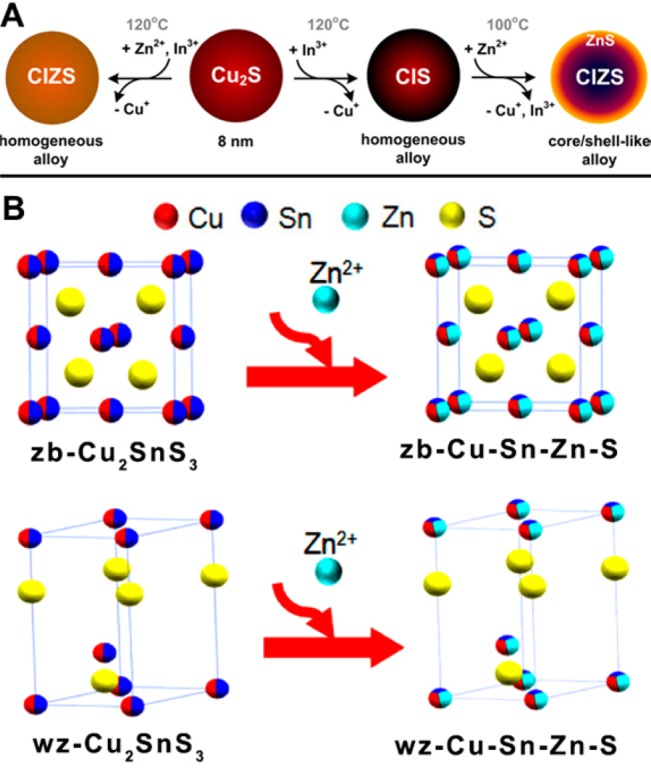Figure 13.

(A) Transformations of spherical Cu2S NCs into ternary and quaternary alloy NCs. The sequential introduction of In3+ and Zn2+ ions leads to the formation of Cu–In–S196 NCs and core|shell-like Cu–In–Zn-S (CIZS) NCs, respectively. The simultaneous introduction of indium and zinc produces homogeneous CIZS NCs (left). Reproduced from [Akkerman, Q. A.; Genovese, A.; George, C.; Prato, M.; Moreels, I.; Casu, A.; Marras, S.; Curcio, A.; Scarpellini, A.; Pellegrino, T.et al. From Binary Cu2S to Ternary Cu–In–S and Quaternary Cu–In–Zn–S Nanocrystals with Tunable Composition via Partial Cation Exchange ACS Nano2015, 9, 521–531]. Copyright 2015 American Chemical Society. (B) Schematic representation of the lattice conservation during CE reactions between zb- or wz-Cu2SnS3 NCs and Zn2+ ions. Reproduced from [Wang, Y.-X.; Wei, M.; Fan, F.-J.; Zhuang, T.-T.; Wu, L.; Yu, S.-H.; Zhu, C.-F. Phase-Selective Synthesis of Cu2ZnSnS4 Nanocrystals through Cation Exchange for Photovoltaic Devices Chem. Mater. 2014, 26, 5492–5498]. Copyright 2014 American Chemical Society.
